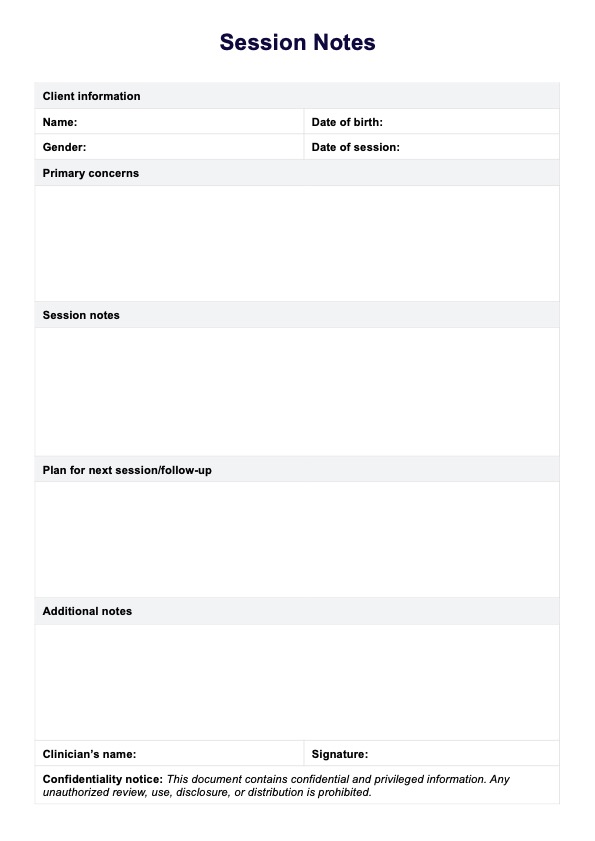Although writing documentation is very important, practitioners can understandably find it very time-consuming. We recommend writing brief shorthand notes during your sessions. These should just be a couple of lines, and you need to ensure it isn't distracting for your patient if you are writing during the session. You can also write your session notes digitally. Although using a physical copy is perfectly fine, it can take much longer, is more likely to contain errors, and is at higher risk of being lost or stolen.

Session Notes Template
Make documentation during clinical sessions easier with our intuitive Session Notes Template.
Session Notes Template Template
Commonly asked questions
This depends on your session with a client, although around a page is probably a good rule of thumb. You want to include all information that could be useful later without going into a minute-by-minute summary.
You have a couple of options when it comes to storing session notes. You can store them in a physical location, like a securely locked filing cabinet. Another option is to use an online platform or EHR. These systems employ sophisticated security protocols and features to ensure that your patient's information is protected at all times while also allowing you to access your notes whenever you like.
EHR and practice management software
Get started for free
*No credit card required
Free
$0/usd
Unlimited clients
Telehealth
1GB of storage
Client portal text
Automated billing and online payments











